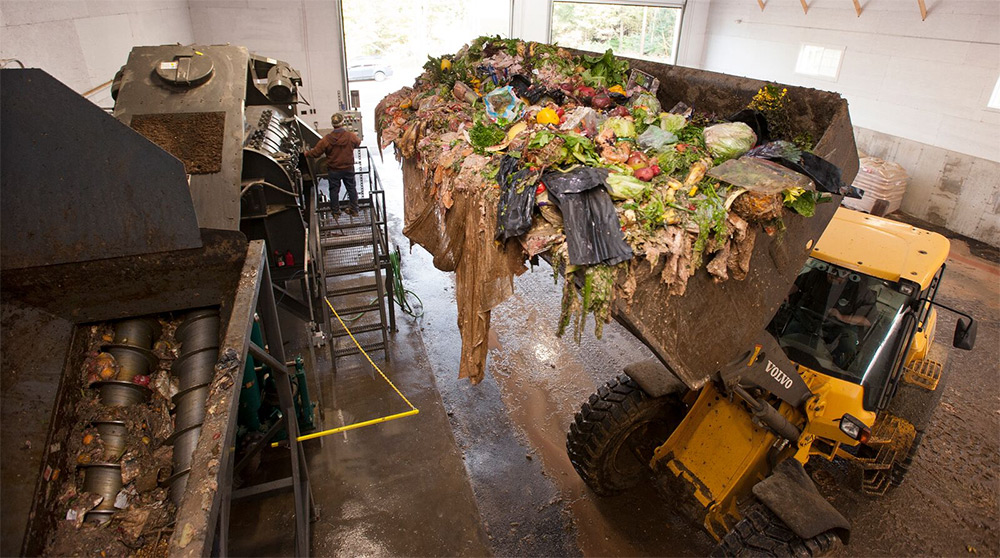Packaged food waste - no problem
by Admin
Posted on 01-08-2022 11:26 PM

Food
waste
is a truly unwelcome form of waste. That's because food waste is an expensive commodity to create, the onus is on the company that generates or manages it to do more to increase recycling. Businesses have traditionally disposed of packaged food waste in landfill since it is so difficult to manage. The latest generation of low-impact depackaging systems offers a solution since it eliminates the need for workers to separate the packing from the food. Microplastics, which are so harmful to the environment and can be created by this technology, are no longer produced. As a result, the latest systems can save food manufacturers and retailers money while also opening up new revenue streams.
 By employing depackaging as part of an integrated food waste management solutions, our the new generation of depackaging systems, can separate food waste from packaging cleanly and create valuable end products such as organic soup for the anaerobic digestion process, and Refuse Derived Fuel if not recyclable plastic resin.
By employing depackaging as part of an integrated food waste management solutions, our the new generation of depackaging systems, can separate food waste from packaging cleanly and create valuable end products such as organic soup for the anaerobic digestion process, and Refuse Derived Fuel if not recyclable plastic resin.
Contaminant is an oft-hurled epithet at food facilities for waste composting and anaerobic digestion highlight processors' concerns about having to clean up incoming organics stream to reduce equipment downtime, and to retain product quality. It's possible to find food goods packaged in virtually any material, shape, weight, or density you can imagine. This includes ASTM-compliant biodegradable plastics, which are gaining ground in the market as a result of their environmental credentials. Everything from the small sandwich tray made of expanded polystyrene foam to the flexible pouch housing a juice drink to the omnipresent film plastic used to cover and transport it all comes packaged in a variety of ways.
The twister de-packager and separator is based on drycake’s third generation of its vertical cyclonic separation technology. Intended to produce a suitable depackaged food waste substrate for ad plants, there is one installation in the u. S. And seven worldwide. The u. S. Installation at north state rendering was covered in a biocycle article (goldstein, 2019). Twister depackager the twister operates on the principle of a separation vortex. The system consists of a feed hopper with an upper screw auger to prevent bridging and a lower screw auger to feed the machine. The hopper also includes a patented debagger, so no prior size reduction is required.
Not everyone shares hanselman’s enthusiasm for depackagers, though. A new depackager in vermont drew the ire of a coalition of farming, environmental, and composting groups, who raised concerns that it would contaminate fertilizer — and therefore, farms — with microplastics and even pfas, which stands for per- and polyfluoroalkyl substances. A third of the state’s food waste is packaged, according to the university of vermont , and state residents and businesses alike are now banned from tossing food scraps into the trash. One of the best waste systems companies built a depackager last year, aimed at helping area food manufacturers like ben and jerry’s keep spoiled products out of the landfill.
Waste separation technology for energy production
The patented separation system has become the cornerstone in the waste recycling industry, specifically for the recovery of organic materials from packaging. These recovered organics can be used for composting, animal nutrition supplements, and/or anaerobic digestion for green energy production. The latest in separators is the industrial waste recycling equipment needed to produce a 99% pure organic stream, regardless of whether the packaging type is plastic, paper, or can. The high efficiency of any separator enables clients to reduce or eliminate waste disposal costs, recycle certain packaging, and create a revenue source via the recovered product.
 Don’t be fooled! many of our competitors claim similar separation rates, except they add 3 times the water.
Don’t be fooled! many of our competitors claim similar separation rates, except they add 3 times the water.
Min output rate
To process plastics for recycling and organic materials for efficient materials use and energy production, while simultaneously reducing carbon emissions as much as possible, the goal is to separate organic matter and packaging in a way that is environmentally friendly and does not result in the creation of microplastics. This must be accomplished while adhering to the waste hierarchy for effective operation of the circular economy. They move the rubbish from the hopper to the bag package pot and sacket opening stage, which is where compression bursting, shear force, and vibration are used in the separating equipment in a way that is smooth, efficient, and uses a minimum amount of energy. This results in the generation of three distinct outputs: a fraction consisting of grit, silt, sand, and outsize particles; a fraction consisting of clean plastic; and an organic fraction, also known as "soup."
WASTE DEPACKAGING MACHINE PROCESSING
Users are able to reuse and recycle waste that would have otherwise been sent straight to landfills thanks to the most recently developed machines for waste depackaging processing, which carry out waste handling while also separating waste contained within outer packaging from waste contained within the waste itself. The problem of wasted food is becoming increasingly urgent for an increasing number of businesses, authorities, and manufacturers. Before being processed, the majority of the waste that is produced cannot be taken directly into the process that is used by the manufacturer. Instead, it must first undergo some kind of separation or the removal of waste packing on its outside. The process of depackaging trash is essential to the introduction of acceptable food waste material into anaerobic digestion plants. This technique is also utilised in the process of reintroducing food into animal feeds.